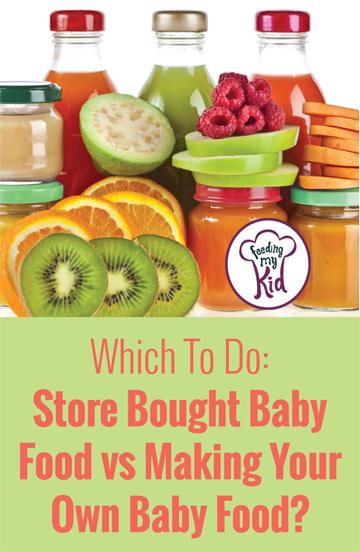 I will start by saying that I bought pre-made baby food. I never cooked before having my twins. On top of that, I was so tired from my sleepless nights and 24-hour a day nursing/pumping sessions that I just couldn’t imagine figuring out how to make baby food. The idea of making my own baby food seemed daunting.
I will start by saying that I bought pre-made baby food. I never cooked before having my twins. On top of that, I was so tired from my sleepless nights and 24-hour a day nursing/pumping sessions that I just couldn’t imagine figuring out how to make baby food. The idea of making my own baby food seemed daunting.
I was too afraid to even try to make baby food. Only recently, did I start making baby food for our video series and I quickly realized how easy it is to make! Why didn’t someone tell me it’s easy? Plus, there are countless benefits to your little baby too.
I would highly recommend making your own food. We are working on creating a whole series of videos to show new parents how easy it is to make your own food. Stay tuned.
Check Out More Baby Food Recipes Here:
- Your Ultimate Guide to Making and Storing Baby Food. Healthier and Budget-Friendly!
- Homemade, Delicious, and Nutritious Baby Food Recipes
- Making It Easier for Moms! Delicious Baby Food Recipes
Don’t Beat Yourself Up If You Don’t Continue Making Baby Food
There is a lot of pressure we put on ourselves under for everything related to your baby. If you find that you are spending too much time making his food and you are not enjoying it, then don’t despair. There are some great organic and natural baby food options available. Each family situation is different and your reasons for doing it or not doing it are your own and are right for your family!
Why We Recommend Making Your Own Food:
1. The food you make is more nutritious for your baby.
The food you make at home is more nutritious than pre-made baby food. Food manufacturers have to heat up the food to high temperatures and then cool the food to sterilize it. This allows the food to have a long shelf life, but depletes the food of valuable nutrients and flavors.
2. The food you make at home just tastes better!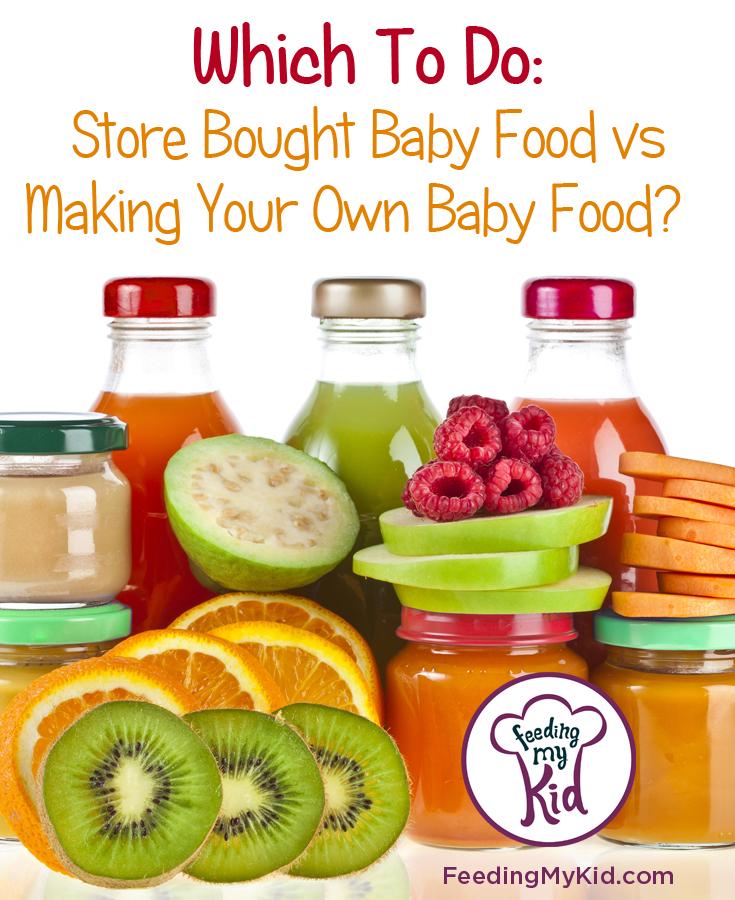
Make some baby food and then create your own taste test against pre-made food. Tell me if you agree with this statement in the comments below. We have some awesome vegetable puree recipes, fruit puree recipe and sophisticated baby puree recipes for when you want to be adventurous.
3. Pre-made food combinations are mostly fruit.
Most of the mixed purees available are mostly fruit. Babies are getting very little vegetables because most of those purée packets are filled with fruit like apple and/or pear. Food manufactures do this for a few reasons, it helps to thin out the puree and babies normally prefer the taste of sweet foods. Babies are not learning to appreciate the taste of individual vegetables because these purees are covering up the flavor with fruits. Your baby will better learn to appreciate vegetables if he is tasting a vegetable.
4. Making your own food doesn’t require anymore more than a fork.
Some homemade baby food does not even require cooking; just smash up a banana and/or avocado with a fork and serve to your baby. You can serve them individually or together.
- How to make your own baby food?
- Baby food making supplies
- Feeding supplies like spoons, bowls, trays
- Recommended high chairs
5. It’s cheaper to make your own food.
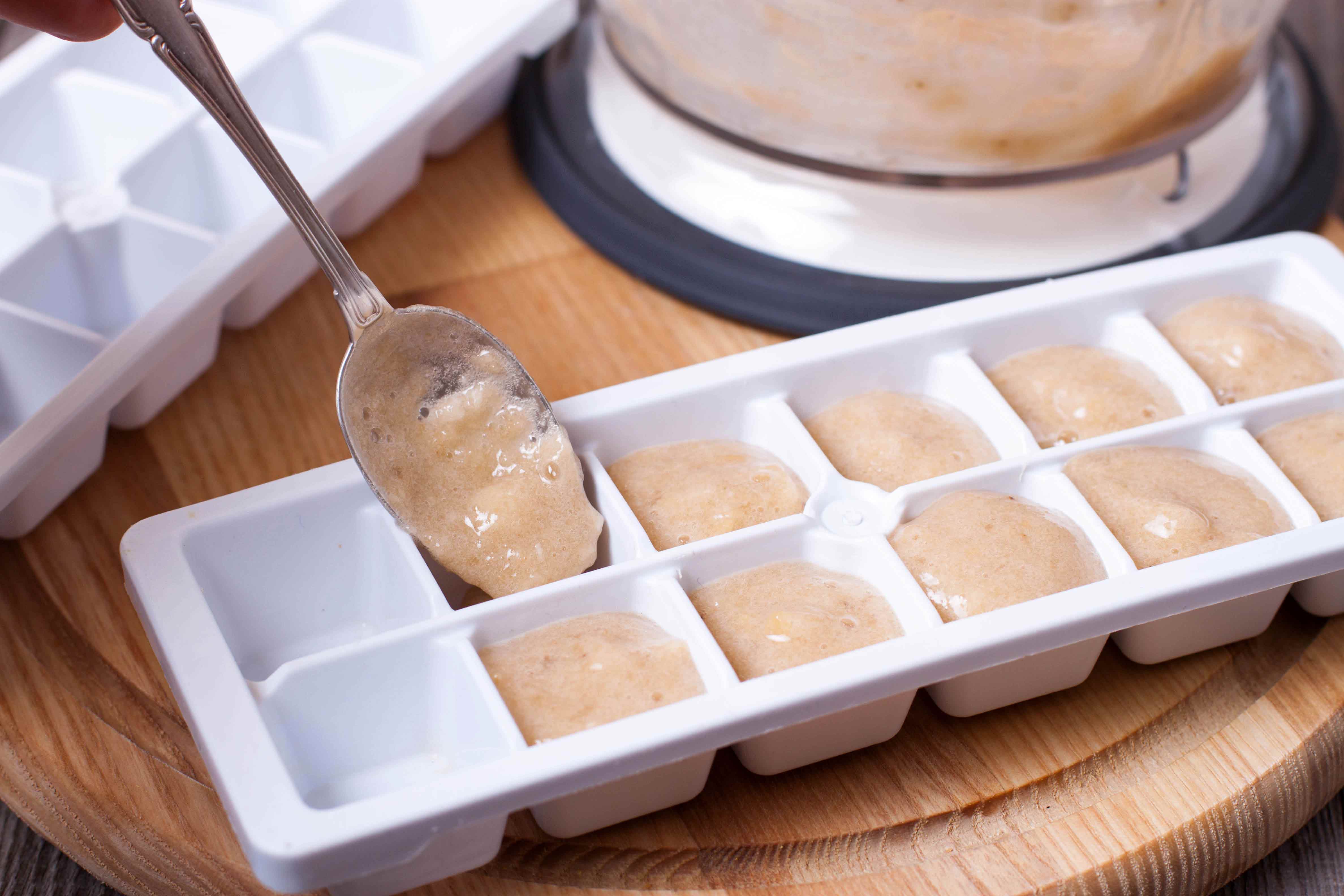 Since I buy organic food, I initially thought there is no way it’s that much cheaper. I was so wrong! Those pouches can range from $1.39- $1.79 per pouch.
Since I buy organic food, I initially thought there is no way it’s that much cheaper. I was so wrong! Those pouches can range from $1.39- $1.79 per pouch.
I can get 12 ORGANIC bananas at Costco for $1.99 and it cost me $1.49 for one banana puree pouch. Let’s say two bananas are pureed in the pouch that would be $.33 versus the $1.49. I don’t even think two bananas are in one pouch. If you use one butternut squash, roast it, and then puree it, you probably can make 10 pouches and tons more if you mix it with other foods.
6. You can do both!
If you don’t have anything thawed or you are out of the house, bring a jar or pouch to make life easier for everyone. You can keep a few pouches or jars in your diaper bag for those feeding emergencies. Occupational Therapists and Feeding Specialists will recommend that you do not let your child suck from a pouch. Babies need to learn how to take food off a spoon.
Thin Out Your Baby Food Initially
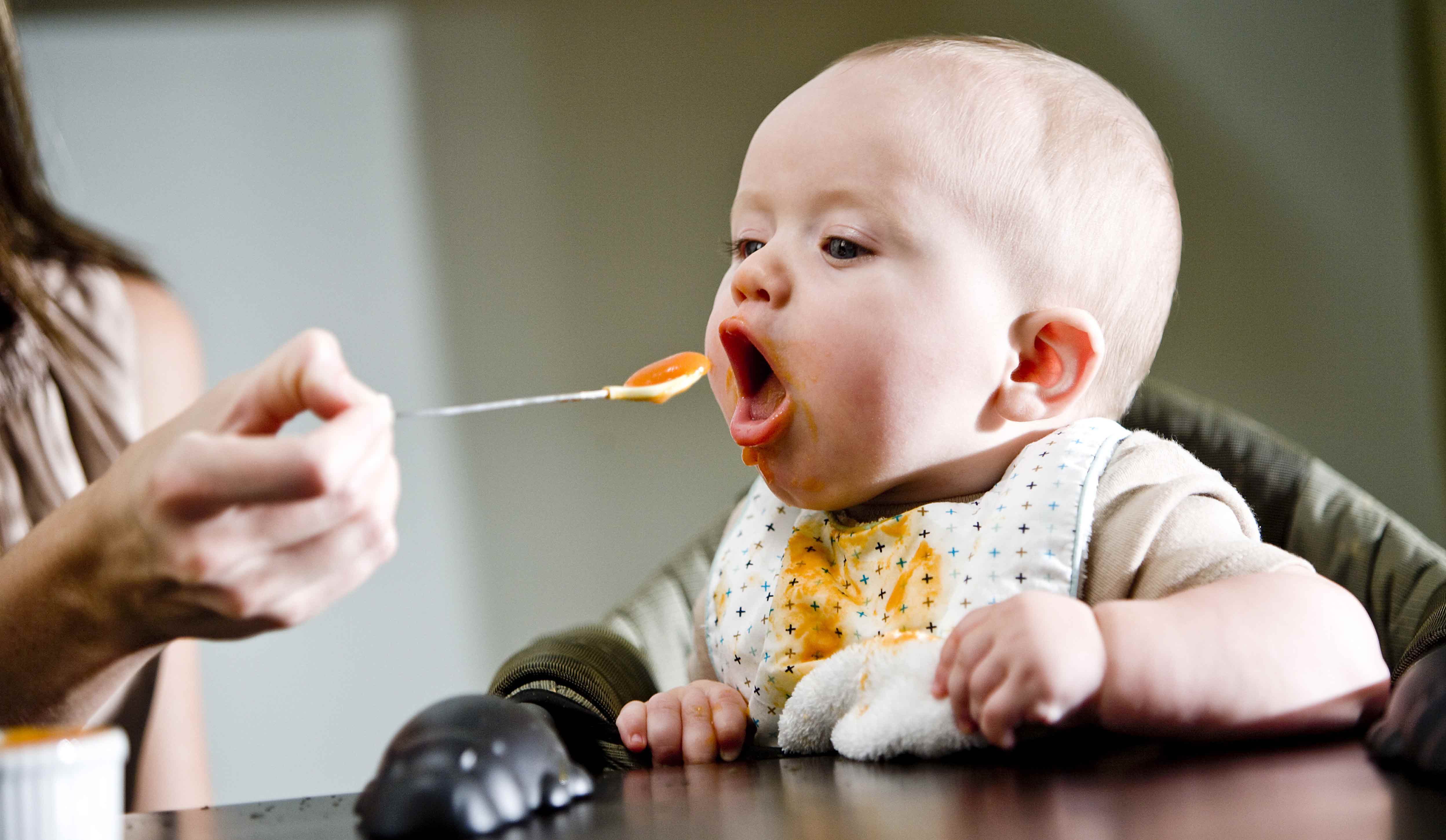 It is recommended you thin out the baby food with formula, breast milk or the water you used to steam or boil the food. Since your baby’s diet has been 100% fluids, thinning out the solids helps your child accept the new food. Keep thinning out the food until you find a consistency that your baby is happy with.
It is recommended you thin out the baby food with formula, breast milk or the water you used to steam or boil the food. Since your baby’s diet has been 100% fluids, thinning out the solids helps your child accept the new food. Keep thinning out the food until you find a consistency that your baby is happy with.
As Time Goes On, Add Texture
It is important you introduce textures in the food you are offering your baby. Let your baby set the pace for how quickly you introduce a variety of textures. If you are making your own food, stop pureeing the food when it still have some small lumps in it. If you are buying pre-made baby food, transition to stage 2 foods. Check out our article about making your own baby food to see what the different textured purees look like. It’s a great visual.
Ensure the food you are offering is not a smooth puree. If babies stay on these smooth purees too long, some babies will not transition to mixed textured foods well. For example, a yogurt with small chunks of fruit has two very different textures.
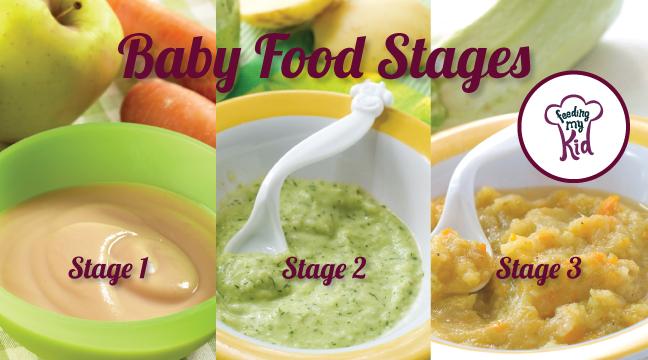 Here are other articles that will help you in your journey to make your own baby food:
Here are other articles that will help you in your journey to make your own baby food:
Welcome to the wonderful world of feeding your baby solid foods!
Will you be making your own purees, using pre-made foods, trying baby-led weaning or a combination?
Whichever option you choose, make sure you speak with your Pediatrician and are aware of any potential food allergy issues.
What is the right baby feeding schedule? Curious about baby feeding milestones?
There are many different techniques on how to prepare and store baby food. Play around and see works for you.
Once you start introducing solids, you may notice your child seems to be barely eating, gagging, or making funny faces. These are all normal!
Check out our top picks for bibs, spoons, highchairs, and plates/ trays.
Subscribe to our Youtube Channel for our video series about how to best feed your baby, toddler. and school-aged child.

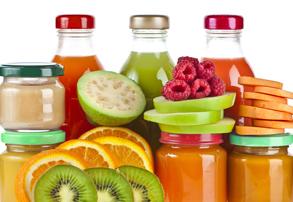
 The information on this website is designed for educational and/or entertainment purposes only. The information provided is not intended to be a substitute for informed medical advice or care. Please consult a doctor with any questions or concerns regarding your child’s condition. You should not use this information to diagnose or treat any health problems or illnesses.
The information on this website is designed for educational and/or entertainment purposes only. The information provided is not intended to be a substitute for informed medical advice or care. Please consult a doctor with any questions or concerns regarding your child’s condition. You should not use this information to diagnose or treat any health problems or illnesses.